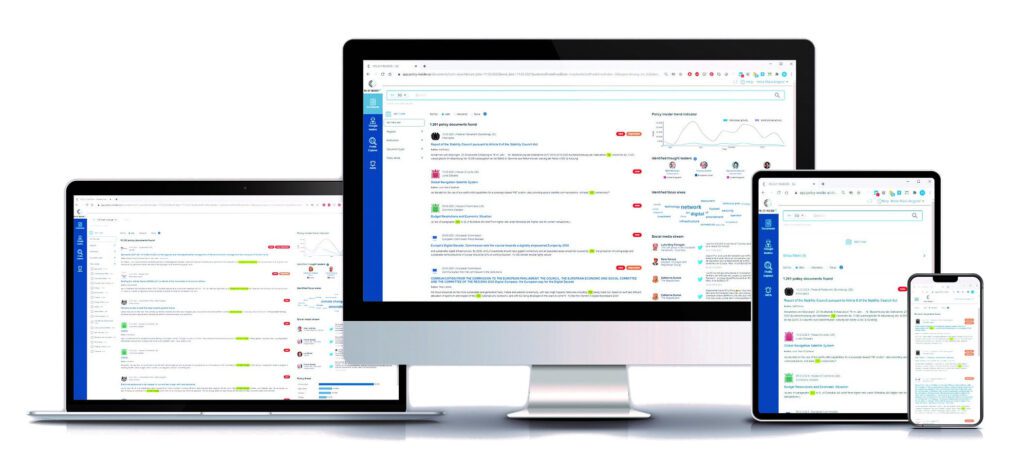Navigating the complex financial seas of Europe, the European Central Bank (ECB) emerges as a beacon of stability and prudence. Serving as the central banking authority for the Eurozone, the ECB’s monitoring and decision-making mechanisms are instrumental in safeguarding the euro’s integrity. In this article, we delve into the ECB’s historical roots, its pivotal role, essential functions, and its influence on the policy-making landscape.
The ECB’s Origins: A Monetary Milestone
Born out of the Maastricht Treaty in 1992, the ECB became operational in 1998. Its establishment marked a key step towards European economic integration, with a clear mandate: to maintain price stability within the Eurozone, ensuring the euro’s purchasing power remains undiminished over time.
ECB in Action: Role, Functions, and Monitoring Mechanisms
- Monetary Policy & Monitoring: At the heart of the ECB’s mandate lies its responsibility to set and implement monetary policy for the Eurozone. By consistently monitoring economic indicators and financial markets, the ECB can adjust policy levers to counteract inflationary or deflationary pressures.
- Banking Supervision: In the wake of the financial crisis, the ECB took on a supervisory role over significant banks in the Eurozone, further emphasizing its commitment to monitoring and ensuring financial stability.
- Financial Infrastructure: The ECB oversees payment and settlement systems, ensuring the smooth flow of transactions across the European economy.
ECB’s Significance in Policy-Making
The ECB’s monetary decisions resonate powerfully within Europe and beyond. By setting interest rates, conducting monetary operations, and issuing currency, the ECB directly influences economic activity, lending rates, and investment decisions. Moreover, its policies shape the broader economic strategy of the European Union, highlighting its central role in the EU’s policy-making matrix.
Public Affairs: Monitoring the ECB’s Pulse
From a public affairs perspective, monitoring the ECB’s activities and decisions is indispensable. By staying attuned to the ECB’s policy shifts, stakeholders – from businesses to investors and economists – can anticipate market movements, adjust strategies, and engage in informed discussions. Such vigilance ensures that the ECB’s decisions, made in the public interest, are continually assessed, debated, and refined.
Start monitoring the ECB with Policy-Insider.AI
– three days free –
Global Counterparts: Central Banking on the World Stage
Central banks serve as the linchpins of national economies, wielding immense influence over monetary policy, financial stability, and economic growth. These institutions are tasked with key responsibilities ranging from issuing currency to controlling interest rates and overseeing the health of the financial system. Globally, several central banks stand out due to their impact on the world stage, while in Europe, a collection of central banks reflects the region’s diverse economic landscape. Let’s delve into some of these pivotal institutions:
- United States – Federal Reserve System (Fed): www.federalreserve.gov
- United Kingdom – Bank of England (BoE): www.bankofengland.co.uk
- Japan – Bank of Japan (BoJ): www.boj.or.jp
- Canada – Bank of Canada: www.bankofcanada.ca
- Australia – Reserve Bank of Australia (RBA): www.rba.gov.au
- India – Reserve Bank of India (RBI): www.rbi.org.in
- China – People’s Bank of China (PBOC): www.pbc.gov.cn
- South Korea – Bank of Korea: www.bok.or.kr
- Brazil – Central Bank of Brazil: www.bcb.gov.br
- Russia – Central Bank of the Russian Federation: www.cbr.ru
European Peers: Central Banks within Europe
- Germany – Deutsche Bundesbank: www.bundesbank.de (included on policy-insider.ai)
- France – Banque de France: www.banque-france.fr (included on policy-insider.ai)
- Italy – Banca d’Italia: www.bancaditalia.it
- Spain – Banco de España: www.bde.es (included on policy-insider.ai)
- Netherlands – De Nederlandsche Bank: www.dnb.nl
- Belgium – National Bank of Belgium: www.nbb.be
- Sweden – Sveriges Riksbank: www.riksbank.se
- Denmark – Danmarks Nationalbank: www.nationalbanken.dk
- Norway – Norges Bank: www.norges-bank.no
- Austria – Oesterreichische Nationalbank: www.oenb.at
In Conclusion
The European Central Bank (ECB), through its rigorous monitoring and policy-making, remains a cornerstone of Europe’s economic architecture. As we navigate the financial currents of the 21st century, the ECB’s role in ensuring stability and prosperity becomes ever more critical.



